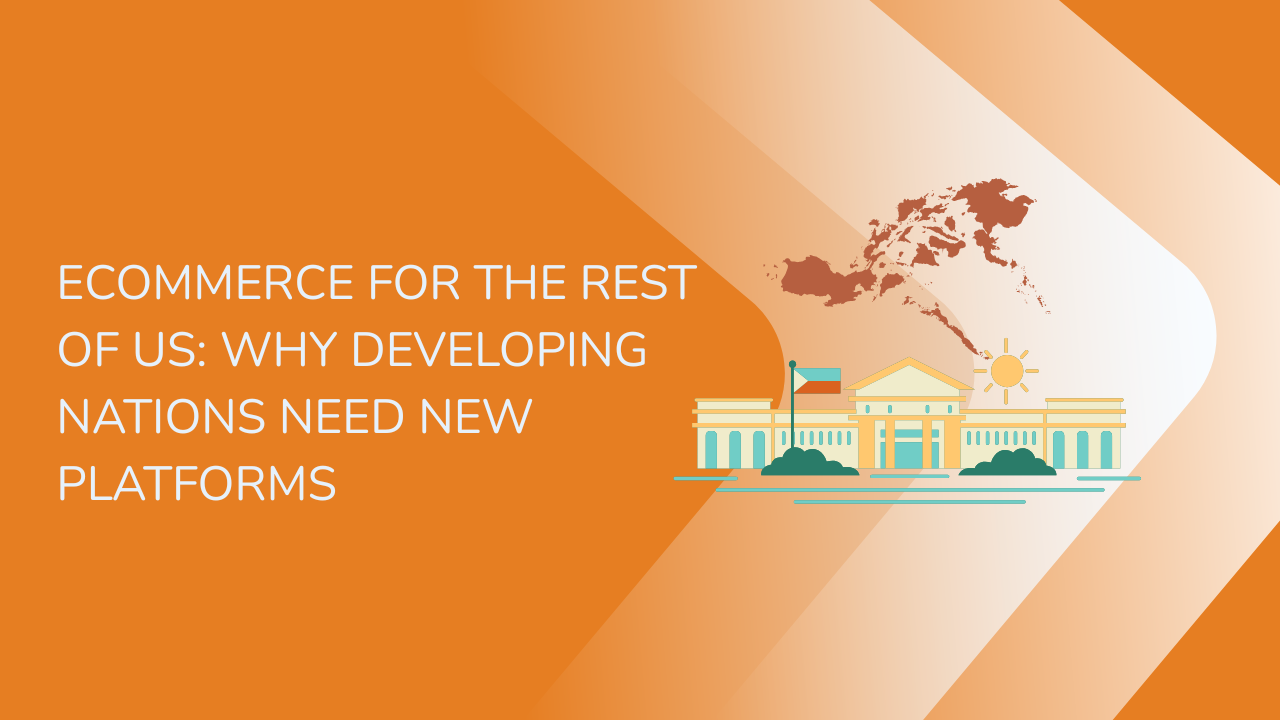Share this Article
Nepal’s e-commerce sector is growing rapidly, driven by an increasing internet user base, the widespread use of smartphones, and a shift toward online shopping. As more consumers in Nepal turn to online platforms for their purchasing needs, e-commerce businesses must utilize effective digital marketing strategies to stay competitive and attract customers. However, standing out in the digital marketplace can be challenging due to the increasing number of online stores. Therefore, e-commerce businesses in Nepal must adopt smart, data-driven digital marketing tactics to boost visibility, drive sales, and build lasting relationships with their customers.
This article delves into the most effective digital marketing strategies for Nepali e-commerce businesses. It explores how you can leverage digital marketing channels to grow your business, strengthen your brand, and increase conversions in the Nepali market.
1. Search Engine Optimization (SEO) for Nepali E-Commerce
SEO is one of the most important aspects of online marketing. For Nepali e-commerce businesses, SEO is essential for driving organic traffic to their websites by ranking higher on search engine results pages. The higher your store ranks for relevant search terms, the more likely potential customers are to find your business.
How to Implement SEO for Nepali E-Commerce:
- Keyword Research: Start by conducting keyword research to identify the terms your target audience uses when searching for products. Keywords in Nepali and English both play an important role in attracting local customers. You can use tools such as Google Keyword Planner, Ubersuggest, and SEMrush to identify high-traffic keywords with low competition that are relevant to your business.
- On-Page SEO: Optimizing your website’s content and structure is crucial for improving rankings. Focus on optimizing the title tags, meta descriptions, headers, and product descriptions using relevant keywords. Ensure that each product page has detailed and keyword-rich descriptions to help search engines understand what you're offering.
- Mobile Optimization: With many Nepali consumers accessing websites via smartphones, mobile optimization is a must. Google prioritizes mobile-friendly websites in its search results, so ensure your online store is responsive and provides a seamless experience across devices.
- Local SEO: As a Nepali e-commerce business, it is essential to emphasize local SEO. Register your business with Google My Business to improve your visibility in local searches. Mention your location and local keywords on your website to target Nepali customers effectively. Additionally, consider integrating your business with local directories such as HamroBazar or NepBay to increase visibility in the local market.
- Content Creation: Content is one of the key drivers of SEO success. Regularly publishing blogs, articles, and how-to guides can help attract organic traffic. For example, if you sell Nepali handicrafts, writing blogs like “The History of Nepali Handicrafts” or “How to Buy Nepali Handicrafts Online” can improve your rankings for relevant search terms.
2. Social Media Marketing: Connecting with Nepali Consumers
Social media has become an integral part of daily life in Nepal, with platforms like Facebook, Instagram, and TikTok offering businesses a direct line to potential customers. Social media marketing allows Nepali e-commerce businesses to increase brand awareness, foster customer engagement, and drive traffic to their online stores.
How to Leverage Social Media for Nepali E-commerce:
- Platform Selection: The most popular social media platforms in Nepal include Facebook, Instagram, and TikTok. While Facebook is ideal for building community and running targeted ads, Instagram is great for visual products and storytelling. TikTok, especially among younger users, can be an excellent platform for viral marketing. Choose the platforms that best suit your target demographic.
- Content Creation and Strategy: Your social media content should reflect your brand’s personality and cater to your target audience’s interests. Create a mix of engaging content, such as product showcases, behind-the-scenes looks, customer testimonials, and educational content. For example, if you sell Nepali apparel, post images and videos of traditional clothing being worn at cultural events or daily life.
- Paid Advertising: Social media platforms offer a variety of paid advertising options to target specific audiences based on location, demographics, and interests. By using Facebook and Instagram ads, Nepali e-commerce businesses can target local consumers who are more likely to convert. Create visually compelling ads to showcase your products and include strong calls-to-action to drive traffic.
- Influencer Marketing: Partnering with local influencers can significantly enhance your brand’s credibility and reach. In Nepal, influencers on platforms like Instagram and YouTube have built strong, loyal followings. Collaborating with them to promote your products can help you tap into their audience and gain exposure. Choose influencers whose values align with your brand for authentic partnerships.
- Engagement and Community Building: Regularly engage with your followers by responding to comments, participating in conversations, and hosting interactive content like polls, quizzes, and contests. Building a strong, loyal community can lead to repeat purchases and word-of-mouth marketing.
3. Pay-Per-Click (PPC) Advertising: Fast-Track Your Traffic
PPC advertising is an excellent way to generate immediate traffic to your online store. Google Ads, Facebook Ads, and Instagram Ads are powerful tools for Nepali e-commerce businesses to gain visibility and drive conversions.
How to Use PPC for Nepali E-Commerce:
- Google Ads: Google Ads allows you to create text or display ads that show up when users search for specific keywords. By bidding on keywords relevant to your products, you can place your e-commerce store at the top of search results. Ensure that your ad copy is compelling, and your landing page is optimized for conversions.
- Targeting Specific Audiences: With Google Ads and social media platforms, you can create highly targeted ads. In Nepal, where specific consumer behaviors and interests vary, this targeting option is particularly valuable. You can narrow down your audience by demographics, interests, behaviors, or geographic location. For instance, if you sell electronics, target tech enthusiasts in Kathmandu or Pokhara, cities known for their higher adoption of technology.
- Remarketing Campaigns: Remarketing is a great strategy to re-engage users who have visited your website but did not complete a purchase. Using tools like Google Ads or Facebook Ads, you can serve ads to these users as they browse other sites or social media platforms, encouraging them to return and complete their transaction.
- Budget Management: Set clear goals and track the performance of your ads to optimize your budget. Start with a small budget, and gradually scale your campaigns based on the ROI (Return on Investment) you see.
4. Email Marketing: Nurturing Customer Relationships
Email marketing remains one of the most effective strategies for driving conversions and fostering long-term customer relationships. For Nepali e-commerce businesses, email marketing helps keep customers informed, promote offers, and encourage repeat purchases.
How to Implement Email Marketing for Nepali E-Commerce:
- Building an Email List: Your email list is the foundation of any successful email marketing campaign. Use your website, social media, and even offline events to encourage users to subscribe to your email list. Offer incentives like discounts, exclusive offers, or free resources to encourage sign-ups.
- Personalized Email Campaigns: Personalization is key to successful email marketing. Use customer data to send tailored content based on their behavior. For example, send personalized product recommendations to customers based on their previous purchases or browsing history. You can also use email segmentation to send different messages to new customers, returning customers, or abandoned cart users.
- Automated Email Sequences: Automation saves time and ensures timely communication with customers. Set up automated workflows for welcome emails, thank you emails, order confirmations, and follow-up emails. For instance, if a customer abandons their cart, send an automated reminder email with a discount or incentive to complete their purchase.
- Newsletters and Promotions: Use email newsletters to keep customers updated on new arrivals, promotions, and upcoming sales events. Create urgency with limited-time offers or seasonal discounts to encourage quicker conversions.
5. Content Marketing: Building Authority and Trust
Content marketing is a vital part of digital marketing for Nepali e-commerce businesses. By creating valuable, informative, and engaging content, you can build brand authority, improve SEO, and attract customers at different stages of the buying process.
How to Use Content Marketing for E-commerce:
- Blogging: Consistently publish blog posts that educate your customers about your products, industry trends, and how-to guides. For example, if you sell organic food products, publish articles about the health benefits of organic foods or how to cook using organic ingredients.
- Video Marketing: Video content is highly engaging and can be used to demonstrate your products, show behind-the-scenes operations, or share customer testimonials. Create video tutorials or product demonstrations to showcase how your products work. For example, if you sell kitchen appliances, make cooking tutorial videos using your products.
- User-Generated Content: Encourage your customers to share their experiences with your products on social media. Create a branded hashtag and ask users to post photos or videos of themselves using your products. This content can be shared on your website and social media platforms, providing social proof and building trust with potential customers.
- Infographics and E-books: Create downloadable resources like e-books, infographics, or product guides. These resources help provide value to your audience and can be used to generate leads. For example, if you sell fitness equipment, create a fitness guide or workout plan as a lead magnet.
6. Affiliate Marketing: Expanding Your Reach
Affiliate marketing is an effective way for Nepali e-commerce businesses to reach a broader audience without significant upfront costs. By partnering with influencers or bloggers, businesses can promote their products through affiliate links and pay a commission on sales.
How to Use Affiliate Marketing for E-commerce:
- Identifying Affiliates: Partner with Nepali influencers, bloggers, or other businesses that share a similar audience. Look for affiliates who align with your brand and can authentically promote your products.
- Tracking Affiliate Sales: Use affiliate tracking software to monitor the performance of your affiliate partners and ensure that they receive their due commissions. This also helps you assess the effectiveness of your affiliate marketing campaigns.
- Attractive Commission Rates: Offer competitive commission rates to incentivize affiliates to promote your products more actively. The more attractive the commission, the more motivated affiliates will be to drive sales for your business.
7. Customer Reviews and Testimonials: Building Trust
Customer reviews and testimonials are invaluable assets for Nepali e-commerce businesses. Positive reviews help build trust, increase social proof, and encourage conversions, while negative feedback provides an opportunity to improve.
How to Leverage Customer Reviews for E-commerce:
- Encourage Reviews: After a customer makes a purchase, ask them to leave a review. Offering incentives like discounts or loyalty points can encourage customers to write positive reviews.
- Showcase Reviews: Display reviews prominently on your website, especially on product pages, to provide social proof and influence potential buyers.
- Respond to Negative Reviews: Address any negative reviews professionally. Apologize for the customer’s experience and offer a solution to show that you value their feedback. Handling negative reviews in a constructive manner can build loyalty and trust.
Conclusion
To succeed in Nepal’s competitive e-commerce landscape, businesses must implement a comprehensive digital marketing strategy that leverages social media, search engine optimization (SEO), content marketing, and data analytics to effectively reach, engage, and retain customers in an increasingly digital-first economy.
Categories:
SEO & Content Marketing
Tags:
SEOfornepal
,
Ecommercemarketing
,
Growyourbusiness
,
Leadgenerationnepal
,
Brandbuildingnepal







